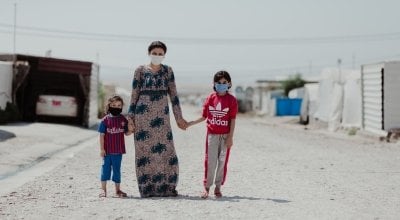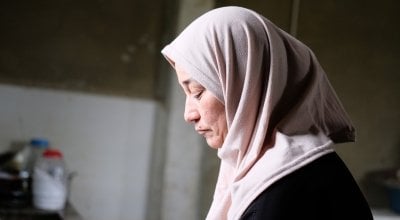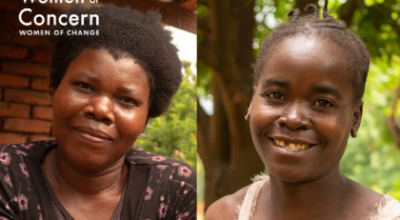
Knowledge Hub
Over 80 million people around the world have been forced to flee their homes. Around half are women or girls, many of whom are unaccompanied, pregnant, elderly or with disabilities, making them especially vulnerable. Being a refugee is hard, but being a woman and a refugee comes with its own unique challenges.
A woman with a voice is by definition a strong woman. But the search to find that voice can be remarkably difficult.
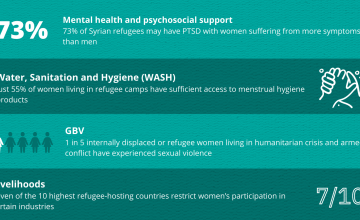
The experiences of women and girls as refugees are significantly different from those of men and boys. Cultural differences often give women lower social status, and make them dependent on men. Lack of educational opportunities make it more difficult for them to access decision-making positions and safe livelihoods. The UN Refugee Agency, UNCHR, states that: “Women and girls are also categorised as a “vulnerable group” with an emphasis on personal vulnerability. However, they are not inherently vulnerable, but the refugee experience places them in situations which create vulnerability.”
Here we explore the gender-specific vulnerabilities that impact women and girls living as refugees and whilst the term refugee is more commonly used, more information on terminology relating to displacement can be found here.
Livelihoods
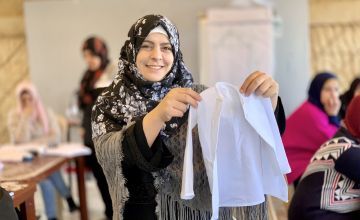
Secure livelihoods offer extremely vulnerable people the opportunity to earn an adequate income and ensure the necessities of life; be it food, shelter, water, or clothing. But for female refugees securing a sustainable livelihood is exceptionally difficult.
Many people who have fled their homes have left behind jobs, careers, businesses and education which they can no longer continue. It can be especially difficult for women to access labour markets and the right to work when living in a host country, making it difficult for them to obtain employment.
Afghan Refugees
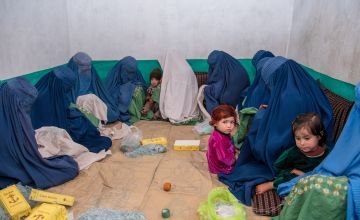
For over forty years Afghans have been fleeing the violence in their country and seeking refuge across nearby borders. There are almost 2.5 million registered Afghan refugees and they comprise the second largest refugee population in the world.
Pakistan currently hosts more than 1.4 million registered Afghan refugees. Almost one third live in refugee camps, where they lack access to basic services, livelihood opportunities and shelter, making them extremely vulnerable, particularly women. Lack of formal education and training opportunities limits women’s access to sustainable livelihoods. This means they are forced to take up low-end, unskilled and often dangerous jobs, which expose them to protection risks, health hazards, exploitation and abuse. Despite these challenges, Afghan women are resilient, resourceful and skilled in different trades and craft making. In partnership with local social enterprises, they are able to make sustainable livelihoods from their crafts and through this income achieve self–reliance gain resilience against economic shocks.
Bilqees Bibi has been living as a refugee in Pakistan for thirty years.
We get the money and spend it on our children’s education. It is essential for our children to receive an education.
Gender-based violence
Gender-based violence (GBV) disproportionately affects women and girls, and in situations of displacement, their risk of exposure to GBV is significantly increased. The risk of GBV is heightened both whilst in transit and in host countries.
Economic vulnerability, lack of traditional protection networks, harsh living conditions and hostilities towards changing gender roles all increase the risk of gender-based violence and harassment. For example, when displaced, women often need to assume more responsibilities outside the home – and, although empowering, in patriarchal societies, men can respond to these changes with violence.
Moreover, Covid-19 has significantly increased GBV figures and has caused it to take on a new intricacy. At a time when services to support survivors were being disrupted or made inaccessible, many women have been forced to ‘lockdown’ at home with their abusers.
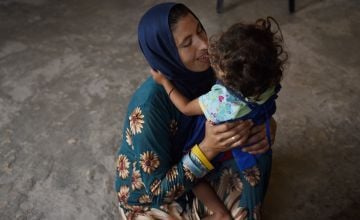
After a decade of conflict and forced displacement, many Syrian refugee men are unable to find work and provide for their families. As a result, their traditional role within the family has been unsettled, leading to stress and lowered self-esteem. This has left many men feeling desperate and their frustration often turns into physical violence towards their wives and children. Cultural beliefs on marriage and a fear of how they would manage alone means that many women are reluctant to leave their husbands and partners. Many are also unaware that social services are even available to them. Women are also at risk of being subjected to gender-based violence (including sexual assault, forced marriage, and honour killings) because of living in accommodation, such as informal tented settlements, that offer little or no security and protection.
I cannot sleep at night as there is no defence, no windows. I don’t feel safe.
Nofah*, a 36-year-old mother, lives with her husband and children in a settlement. She said: “Often, people come at night to peer through the space where windows should be, especially at the women.”
Mental health and psychosocial support
Many displaced women and girls are traumatised by their experiences, and the uncertain situations they live in create added stress. Moreover, due to lack of support networks and without some connection to their previous “normal” lives refugee women and girls can often feel isolated and lonely.
According to UNHCR, exposure to violence or disaster, loss of or separation from friends and family members, a decline in living conditions, the inability to provide for one’s self and family, and lack of access to services can all have immediate and long-term consequences for individuals, families and communities, including post-traumatic stress disorders, depression, anxiety and even violence.
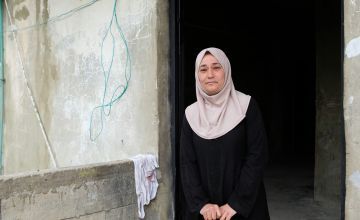
50-year-old Maha* was a primary school teacher in Syria before she fled to Lebanon in 2014. She now lives on her own in a concrete collective centre housing ten refugee families. She is attending a 12-week women’s group programme, which provides psychosocial support and helps promote gender equality, reduce gender-based violence, manage protection issues and gives the women the opportunity to share their experiences.
“It can be overly stressful living here. But the sessions have taught us how to care for ourselves and manage stress. We’ve learned a lot of techniques to reduce our daily stress, like going for a walk and socialising. I love to sit with other women in the group and talk together,” she said.
When we share our problems, I see mine as small.
Water, sanitation and hygiene
Refugees often live in tough environments that make access to safe water and adequate sanitation facilities difficult. Displaced women and girls often struggle to meet their menstrual hygiene needs. Without the provision of sanitary items or suitable washing facilities, women and girls may avoid attending school or engaging in livelihood activities. This has a negative impact on their economic and social lives.
Needing to travel long distances in search of a water source when your daily water and sanitation requirements are higher, is extremely difficult. Additionally, not having access to separate latrines and washing facilities for women and men increases the risk of sexual, psychological or physical violence. This can result in some women or girls refusing food and water to avoid having to use latrines.
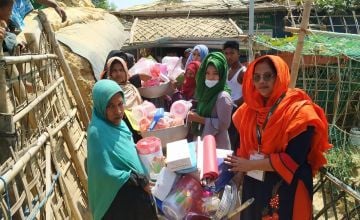
Almost one million Rohingya refugees live in Bangladesh in refugee camps such as Cox’s Bazar, having fled violence in Myanmar. Cox’s Bazar has now become the world’s largest refugee camp. The distribution of dignity kits improves the psychosocial and physical wellbeing of women and girls. By including items such as intimate wash and sanitary items, women and girls are able to move around more freely and comfortably. Preserving women’s dignity whilst they live in such challenging conditions is vital.
In the Rohingya refugee camps, 56% of households have trouble accessing water supply points, due to distance and the number of hours waiting in queues. This too has more of an impact on women and girls.
"Amongst the unstable conditions, women are encouraged to come to Women-Led Community Centres where they get the opportunity to invest their time and skills in a productive way. Women are receiving training on tailoring. They have started with cloths and now they are producing reusable sanitary pads. The objective of this initiative is to support Rohingya women and girls to take care of their menstrual hygiene in a sustainable manner. They also get the opportunity to cope with the stress caused by the ongoing crisis by engaging themselves in such types of activities that are beneficial for them and the community." - Shaikh Jannatul Moushumy, Coordinator of Concern’s emergency response in Cox’s Bazar.
The experiences of women and girls as refugees are significantly different from those of men and boys, which is why being part of Women of Concern is more important now than ever. We must continue to try to lighten the load of the challenges of being a woman and a refugee that affect almost all aspects of their lives
There are millions of people, refugees, who have experienced the same conflicts and struggles I did. They have the same potential to defy the odds and achieve great things.
Other ways to help
Donate now
Give a one-off, or a monthly, donation today.
Join an event
From mountain trekking to marathon running, join us for one of our many exciting outdoor events!
Buy a gift
With an extensive range of alternative gifts, we have something to suit everybody.
Leave a gift in your will
Leave the world a better place with a life-changing legacy.
Become a corporate supporter
We partner with a range of organisations that share our passion and the results have been fantastic.
Create your own fundraising event
Raise money for Concern by organising your own charity fundraising event.



